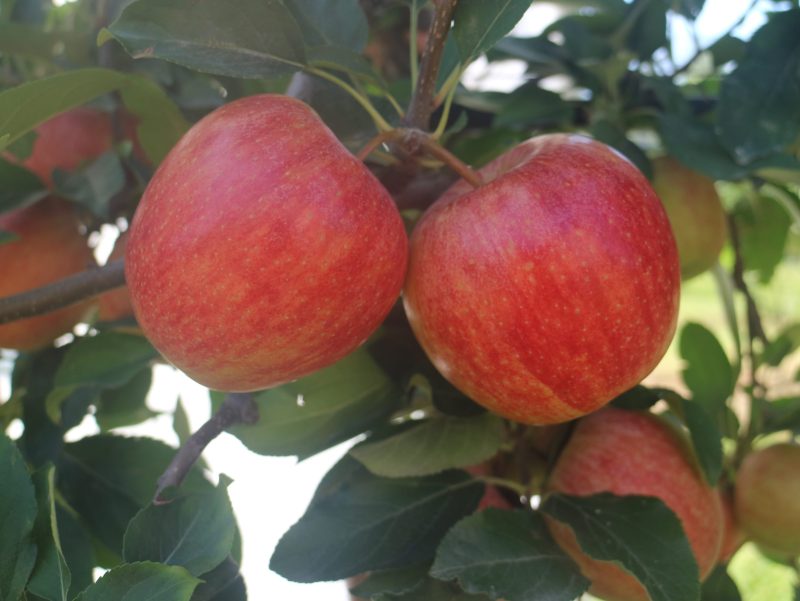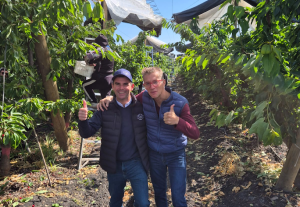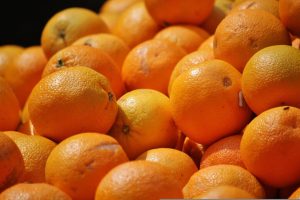Genetic improvement programmes are at the heart of the CIV’s activities (Consorzio Italiano Vivaisti), and a key part of the work that is being carried out there involves the selection of new clones. Accordingly, within the early apple segment, they have selected two new Gala clones with particularly interesting characteristics.
Early colouring with T-REX®/CIVT15*
T-REX®/CIVT15* stands out due to its early colouring compared to other Gala clones. The production shows an excellent uniformity, both in ripening and in size, with larger fruit, showing a distinctive conical shape.
The stability of T-REX® has impressed the breeders, who have decided to select this clone owing to its production advantages. Even in lower areas, where early colouring is more difficult to achieve, T-REX® has proven this key characteristic. It also has a more compact growth than the traditional Gala. The Asian markets are showing great interest in this clone, which has excellent growth prospects worldwide.
TIGERGALA®/CIVS15*, with striped peel
The organisation’s response to Gala clones with striped peel is TIGERGALA®/CIVS15*.
This clone, which is also characterised by its large amount of stripes with excellent colouring, is extending its crop areas to markets that are particularly challenging for this aspect. In the face of climate change, which has a negative impact on yields, particularly in lower areas, TIGERGALA® stands out due to its dark-coloured stripes that come earlier than in other clones.
Federico Stanzani, the Sales Manager at CIV, explains that: “Interest in Gala T-REX® is growing amongst producers owing to its distinctive characteristics: its uniform red colour covering its entire surface and its large size. The fruit is drawing the attention of consumers and buyers on the supermarket shelves.”
Exclusive varieties
T-REX® and TIGERGALA® are exclusive products and they are only available in the nurseries that are members of CIV: Mazzoni Vivai, Tagliani Vivai and Salvi Vivai.
CIV’s genetic improvement programme continues to develop these and other varieties, aimed at maximising production gains and organoleptic properties, at the same time as tackling the challenges set forth by climate change.




















